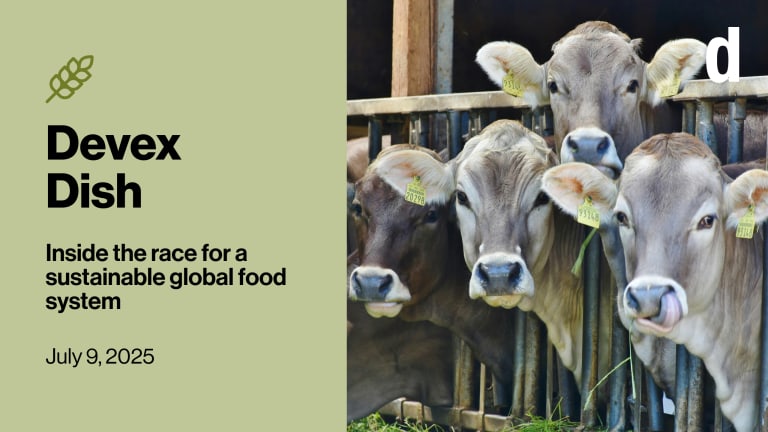
This year marks 10 years since the world last eradicated a disease in its entirety.
Rinderpest, an infectious disease that killed millions of livestock throughout the world for centuries, remains only the second disease to be totally wiped out since smallpox in 1980.
Lessons from the eradication of rinderpest offer us a glimpse of what is possible when global partners band together for a single cause. In the case of rinderpest, cooperation resulted in the eradication of a disease that was at least 2,000 years old.
Today, calls for a new international treaty to unify pandemic preparedness illustrate that COVID-19 has reinforced the importance and value of eradicating disease in people. But eradicating animal diseases, or at the very least, preventing their outbreaks, can be just as beneficial — financially, environmentally, and socially — and requires the same level of international cooperation, attention, and action that has led to these landmark achievements in global public health in the past.
All that is needed now is for governments, including the G-20, to recognize the benefits of a “One Health” approach ... through collaborative disease prevention and eradication.
—Representing the world’s largest economies and populations, the G-20 are uniquely positioned to lead the way for a new global effort to prevent and eradicate deadly and damaging animal diseases.
The global adoption of a “One Health” approach — recognising the interconnectivity of human, animal, and environmental health — would lead to financial, environmental, and social benefits for all.
Outbreaks of animal diseases, such as rinderpest, are costly — for both livestock and for economies. One Africa-wide outbreak between 1982 and 1984, for instance, cost an estimated $1 billion, destabilizing the livelihoods of the continent’s livestock tenders, most of whom were, and still are, smallholders.
The Global Rinderpest Eradication Strategy, the center of which was an international vaccination campaign, led to savings of nearly $1.4 billion in Ethiopia and Kenya alone. Research also shows that investing in vaccine development for today’s most damaging animal diseases could also save more than $75 billion for vulnerable communities throughout Africa and Asia.
Animal diseases are also a contributor to livestock emissions since resources invested in raising animals that ultimately fall ill or die create “wasted” emissions. Preventing the 2019 outbreak of highly contagious African swine fever, for example, could have stopped up to 45 million tonnes of greenhouse gases from being invested in production of livestock that did not ultimately reach the food chain.
Finally, the connection between animal disease and human welfare is clear. Animal diseases have a direct negative impact on human livelihoods. They make food supplies less accessible and secure, and can — in some cases — jump to humans and cause illness.
Q&A: What it will take to prevent another virus 'spillover'
What's better than containing a disease outbreak? Preventing it in the first place. Devex speaks to Dr. Aaron Bernstein, chair of the Scientific Task Force to Prevent Pandemics at the Source, about a new report on how to do that.
Eradicating dangerous animal diseases can help to not only ensure healthier animals, but also healthier, more sustainable, and more stable livelihoods for the world’s hundreds of millions of poor livestock keepers, who are often the most vulnerable during animal disease outbreaks.
A decade on, the world can look back and see the dramatic benefits we have enjoyed in the wake of Rinderpest’s eradication.
Veterinarians and public health authorities are now more equipped and ready to act with better technologies and tools to tackle those animal diseases which continue to pose the biggest threats to lives and livelihoods worldwide.
In 2021, we now have the playbook, and the tools, to begin tackling more and more dangerous animal diseases. This includes peste de petits ruminants, which has caused the deaths of millions of livestock and devastated the livelihoods of millions of smallholder farmers and herders throughout the world, and which the United Nations has targeted for eradication by 2030.
All that is needed now is for governments, including the G-20, to recognise the benefits of a “One Health” approach to both animal and human health through collaborative disease prevention and eradication.








